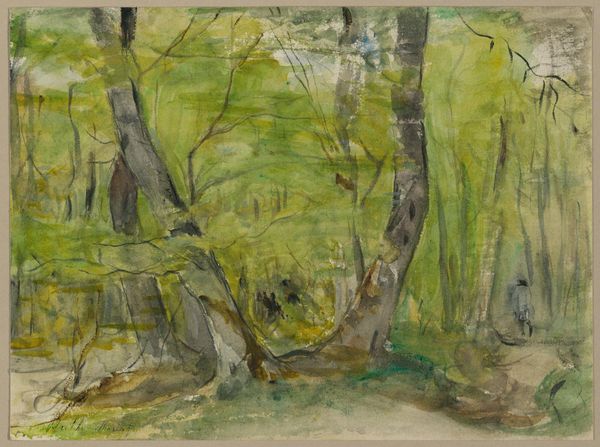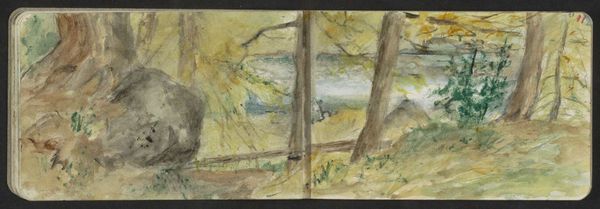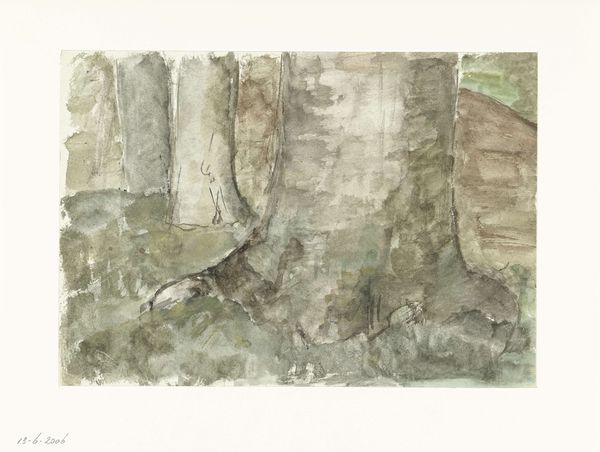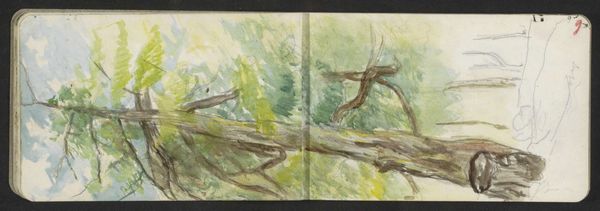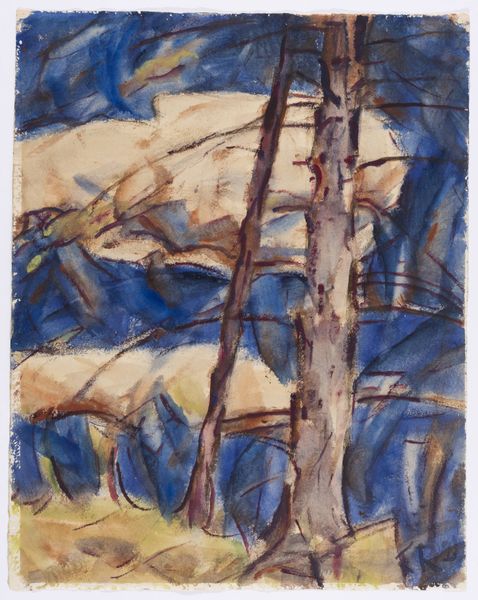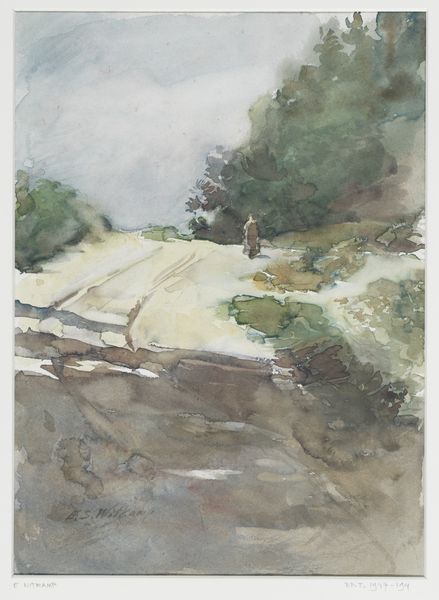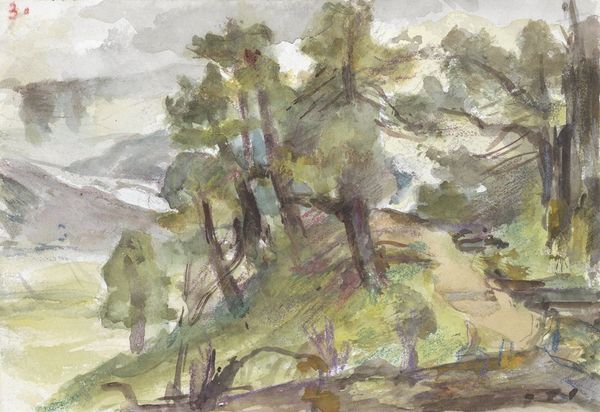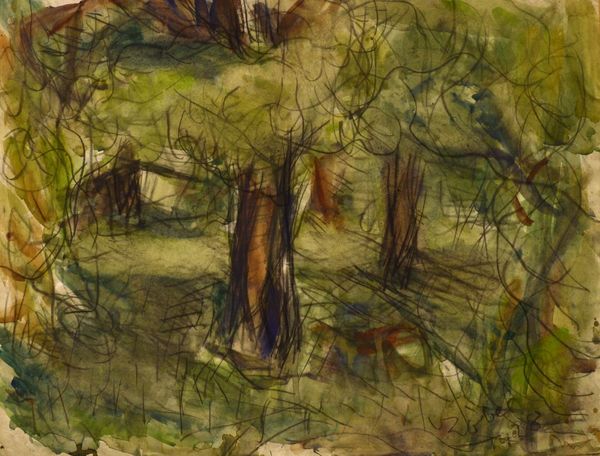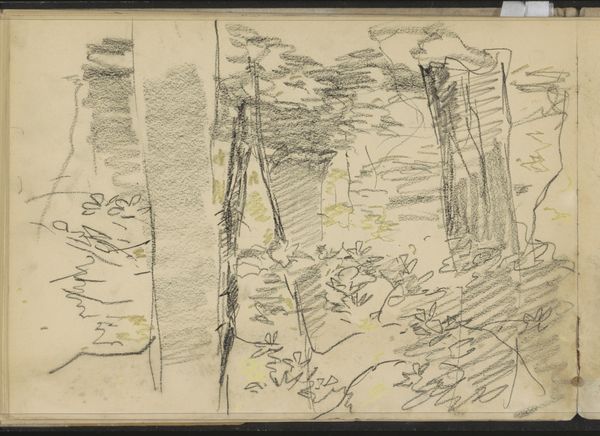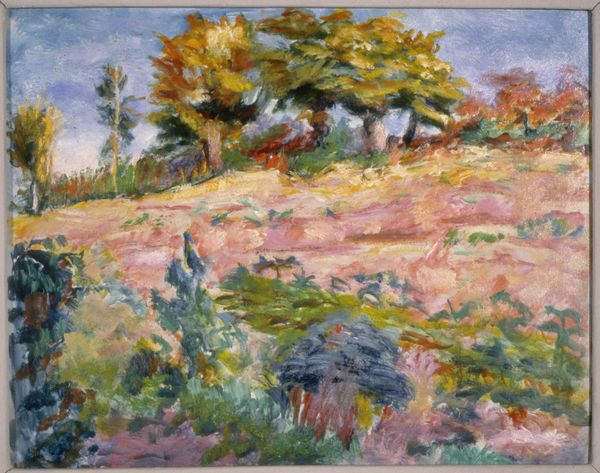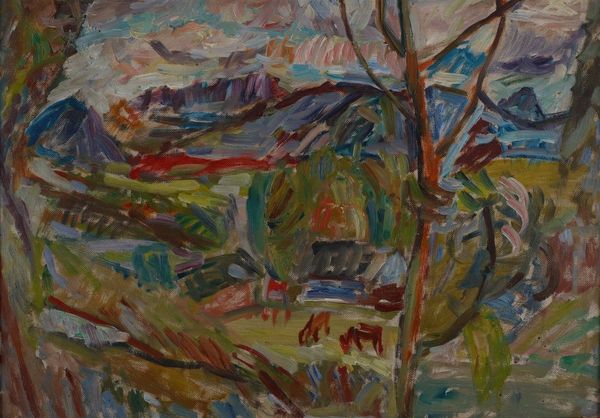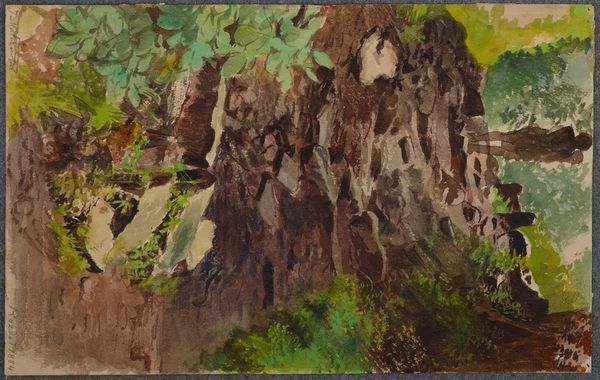
plein-air, watercolor
#
water colours
#
impressionism
#
plein-air
#
landscape
#
watercolor
#
intimism
#
coloured pencil
#
underpainting
Copyright: Rijks Museum: Open Domain
Editor: Here we have Jozef Israëls’ “Bos in Pontresina,” created around 1869. It’s a watercolor painting that strikes me as surprisingly modern in its abstraction, especially the bold, dark strokes defining the rocks and fallen trees. What catches your eye in terms of formal elements? Curator: Precisely. Observe how Israëls exploits the inherent fluidity of watercolor. He layers transparent washes to suggest depth, while simultaneously employing decisive, opaque strokes to construct the scene's architecture. Note the interplay between the earth tones – the browns and greys – and the vibrant greens which, however subtle, contribute a dynamic tension. Consider the implications of the composition’s near symmetry, almost a diptych of light and shadow. Editor: I see what you mean about the composition; it's almost divided down the middle. So, is he using the symmetry to emphasize the contrasts within the forest itself? Curator: One could argue that symmetry implies balance and harmony but given Israëls' somewhat dissonant colour choices that the harmony is on the verge of collapse. The eye struggles to find a focal point, is it the darkness and earthiness of the rock formation to the bottom left, or the more inviting openness towards the right? Editor: So it's not about presenting a tranquil forest scene, but maybe capturing something more complex, a kind of visual tension, using relatively limited color? Curator: Yes, exactly. And observe how the medium itself—the watercolour—enhances this effect. The fugitive nature of the pigments lends a fleeting, ephemeral quality, reflecting the transience inherent in the natural world itself. What lasting impression does the painting give? Editor: It leaves me pondering the underlying structures, and how they’re presented through colour and technique. Curator: Indeed, a successful formal analysis allows us a privileged insight to those choices, elevating the experience from a simple observation, into a complex engagement.
Comments
No comments
Be the first to comment and join the conversation on the ultimate creative platform.
